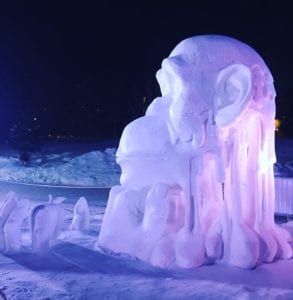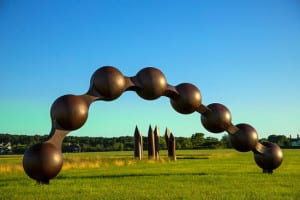Whether installation, performance, or video – the work of Gardena-based artist Yoshie Sakai jumps out deliciously at the viewer. Perhaps it is the slightly off-kilter editing or the playful mix of both sensible and ridiculous scale-relations (the art of collage at its finest), no matter how you cut it, the handiwork of Yoshie Sakai is unmistakable. Visual delight and emotional poignancy pervade her practice, which examines familiar anxieties and despair in a humorous, tragicomic fashion. From the “love-hate” of consumerism and pop culture, to the “model minority” myth, to the intricacies of familial and gender relations: Yoshie’s thorough investigation of her own experiences fuels works as heartbreaking as they are endearing. Hoping to learn more about this brilliant yet humble artist, we pay a visit to her studio-turned-greenroom.
Art Zealous: Knowing that your soap series KOKO’s Love is semi-autobiographical, what is it like to make such personal work about people with whom you still have relationships? We imagine it must have been difficult to begin…
Yoshie Sakai: The characters, location, and scenarios in “KOKO’s Love” are inspired by my family and family history, which actually makes it easier to begin my project because it starts from a place of familiarity and comfort. I have always enjoyed making up stories, and if I can initiate the process with people and places I know, it is just that much more fun to see how these characters change in the context of the melodramatic and extremely exaggerated plots and subplots of the soap opera. But what is difficult is the aftermath, once the episode is done, and family members see the work. Their critique and opinions of what they have just seen is pretty tough, as most of the time, they would probably rather not have the episode exist because it hits so close to home – especially the mother figure, modeled after my real mother and harshest critic of them all.

AZ: A lot of your work “feels” extremely spontaneous, but as they are rather complex video works they must take a lot of careful planning and execution. How do your projects begin, and how much of it is fully formed before you shoot the various footage and scenes that then are collaged and layered together? How do you keep things “fresh” and spontaneous for yourself while going through the laborious processes of editing and post-production?
YS: Although the end product is a video – a very visual product – my process begins with brainstorming a long time consciously while awake and unconsciously while sleeping, finally culminating in a script/screenplay. Even though I was trained as a painter, when I storyboard my project it is not through pictures but with text. So as I am writing the script I am making notes on the side for what the character is wearing and what type of shot I am shooting (extreme long shot, long shot, medium shot, close-up, extreme close-up, etc.). I would have to say that the various footage and scenes are pretty much fully formed before I start shooting, as I envision how each scene is shot as I write the script. Since my video process is primarily green screening, I need to have every detail planned out before I start shooting so I know where I am supposed to be placed in the scene when I play every role. I need to shoot the background and props first without me in it, and then I film myself as well as some of the props on the green screen by themselves. It is a very laborious and manual process as I do not consider myself a “techie” or highly technical in any way. Even with all my planning, I need to reshoot scenes constantly because of miscalculations in where I am placed in the scene in relation to my other characters/selves within the set. Because I always feel like I am learning, I feel that editing and post-production stays pretty “fresh” all the time as I am constantly encountering new techniques and am constantly having to problem solve. I love problem solving, especially in post-production and discovering new things. I actually try to shoot as quickly as possible since I enjoy editing the most!

AZ: You mentioned that when you moved to Hawaii, it immediately felt like “home.” Why? What made it feel “right?”
YS: I never thought about the concept of “home” until I lived in Hawaii for five years from 1995 to 2000. It was never ever something that occurred to me. I had always lived in California, most of it in Southern California in my hometown of Gardena, and one year in Oakland/Berkeley. But when I started living in Hawaii, I thought, “Wow, this is home.” It is really difficult to put in words, but there is a feeling of belonging, warmth, and comfort, almost like a deep sense of déjà vu or a feeling that I had lived there once before and that I was returning. Maybe it is a past life kind of thing but my five years in Hawaii was “home.”
AZ: What was it like studying the BFA on the second go-around? Was it harder or easier, as someone who had already obtained two degrees? Was it difficult socially?
YS: I have always thought of myself as a professional student, and if it weren’t for a lack of funds, I would probably still be in school if I could. School was always a safe space, a second “home” of sorts. I loved studying painting and drawing on my second go-around for my second bachelor’s degree in fine art/BFA. I had already received two bachelors’ degrees (BAs) in Communication Studies and Ancient Greek and Latin so everyone thought I was getting my Masters when I was getting my BFA, but no, I was in school again for another bachelor’s degree. I definitely thought it was easier, for one because I was an older student and had experienced it before, and this second time, I was more certain of why I wanted to pursue my field of study – in this case, studio art. I really was there because I wanted to be there, not because it was what I thought was a natural progression from high school. What I have always found since being in the arts is the open- mindedness of everyone, from students to teachers, and a welcoming attitude and willingness to learn from and about others. I found it to be much easier socially than the first time around, as I was already in my 30s and had a bit more confidence (still working on it…) in who I was and why I was studying art.
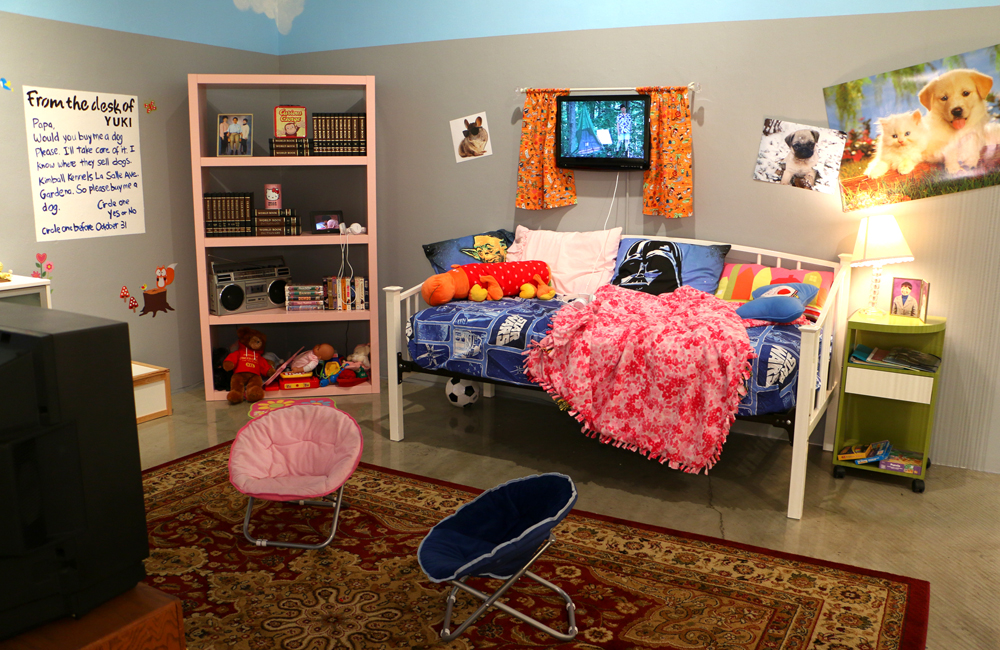
AZ: Do you still engage with your “past life” of ancient Greek and Latin (Classical civilization)? Has your interest faded or changed, or is it more that you did not like the academic and career tracks in that field? Do you think those studies still influence or inform your practice in any way?
YS: I actually do not engage with my “past life” of ancient Greek and Latin at all in the specific sense of actively reading ancient texts in the language or even in translation. It probably is that my interest has changed, and I did not want to pursue the subject in as intense a fashion. It was probably not the right field and lifestyle for me, as the only career track is academia. I do love the ancient stories and narratives, and my interest in narrative and character development may somehow be rooted in my exposure to the classical stories and characters from the past. I do still believe that my past studies in Classics will come back into my work someday, as I think everything we are seeing, learning, or absorbing in life has a purpose and reason.

AZ: There’s a kind of innocence in your work – we can’t figure out if it is accessible or inaccessible to children. The core narratives and forms are usually simple, recognizable, and even silly at times. Yet their critical undertones loom ever-present and carry the heart of the work. How do you approach the issue of naïveté as a device or power, and who are you defining as your audience?
YS: My goal is to have a large an audience as possible and if that includes children, that is great! They may not understand everything that is going on, but I am very appreciative of their interest in finding my work appealing for whatever reason from the bright colors, use of popular and accessible pop music, or the story, etc. I do not consciously approach my projects with naïveté as a device in mind. People have always pointed that out, but I think it is just what comes out of me, and it is because I am still a child at heart. Growing up as an only child, I don’t feel like I was spoiled in terms of material goods like toys, games, clothes, or entertainment (television shows and movies) etc., so it may be a way that I am compensating for the lack of those things as a child. My audience is anyone out there who is willing to see the humor in the functional dysfunctionalities of family dynamics and human relations.
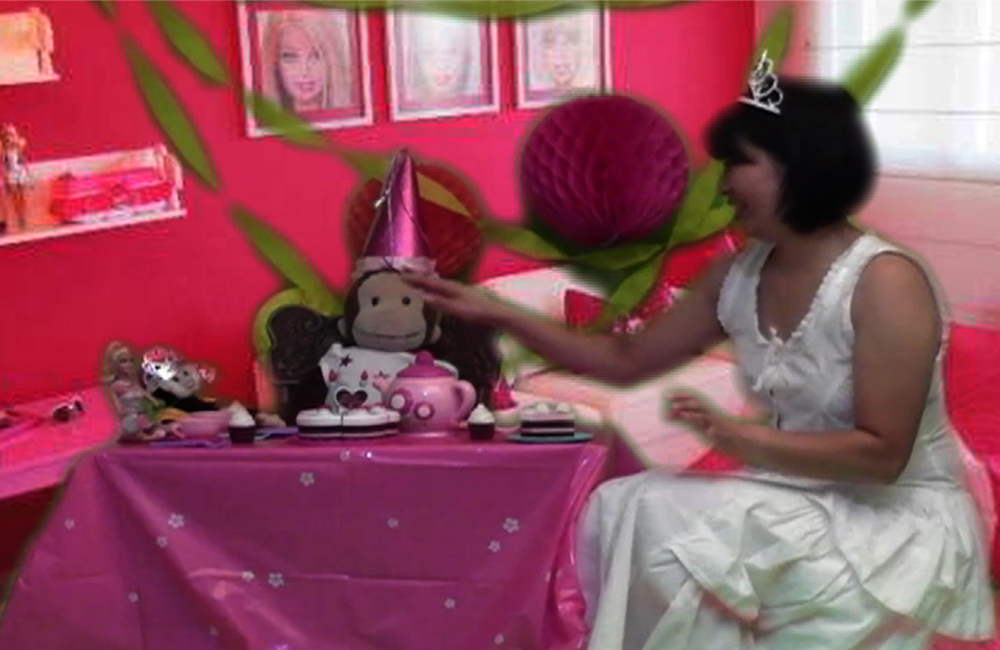
AZ: You use a lot of footage from amusement parks and other spaces of mass consumption or spectacle, why do you gravitate towards amusement parks and why do you think they’re so funny and tragic at the same time?
YS: I do use a lot of footage from amusement parks and spaces of mass consumption, and for me, the attraction for these “sets” are the push and pull between the artificiality and the fun or appearance of fun generated by the people or “consumers” interacting within the created world. I do not use them because I think that they will be funny but perhaps more for its quality of sadness and loneliness, as most of these places that are created for entertainment and for creating memories are only meaningful because of the people you are with. Abandoned fairs with booths and carnival rides are quite creepy, and if you were to walk through them alone in the daytime or night, I think they become places where one has to confront their fears and anxieties. So while they may seem funny, e.g. the sped-up rides at the Santa Monica Pier in my video “Come One, Eat All,” for me they are unnatural spaces that exist for a temporary pleasure that is fleeting and eventually will be gone. It is just an illusion of fun or happiness.

AZ: We love the dolls that you sometimes use, why do you think they’re so effective as “stand-in humans”? When do you decide to “act out” a role or use a doll instead?
YS: Gosh, this is a great question, as I feel like I rarely “act out” a role not dressed as a doll or in disguise. I do see my “dolls” and characters as all alter egos/avatars of myself. I find performance to be very scary and so vulnerable that to make transparent what is happening on the inside on the outside, it is easiest for me to go about this by playing different characters. From the father-figure, Hiroshi, in “KOKO’s Love” whose character is based on my real father (whose temperament I very much identify with) to the “dolls” that represent Britney Spears in “Britney Scale Surgery” to the “adult-girl” doll child in “Come One, Eat All,” all these characters reflect my fears and anxieties of the pressure to meet expectations and the failure to do so. This ranges from not maintaining weight goals to buying products to consume like candy and fast food to maybe make myself feel better, or not. My deep-seated desires and suppressed outrageousness become blatant through my “dolls” and characters.
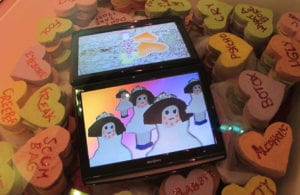

Left: “Squeezed” Yoshie Sakai (2007). Right: “Britney Scale Surgery” Yoshie Sakai (2008).
AZ: Are you meaning for things to come out as sort of sad, or, as you describe, “complacent”? Or do you think they naturally come out that way because the overload of pop culture tends to elicit this kind of sentiment?
YS: I don’t start by making my pieces to intend them to come out “sad,” but the work does originate from a place of darkness and anxiety within a contemporary society of media saturation. Though there is a sense of revelry that comes from imbuing oneself with media-related pop culture, there arises at the same time a sense of alienation from the electronically-mediated relationships perpetuated by media oversaturation.

AZ: Your musical selections and background tracks are so on point – what is that process like? Do you have a piece of music in mind while making the visuals, or do you look for the audio afterward? Is it a simultaneous mixture of both?
YS: It is actually an active simultaneous mixture of both. A lot of times I have a song/composer in mind. For example, for my soap opera “KOKO’s Love,” I knew that I wanted to incorporate Chopin because I feel like the title tracks to soap operas on television sound Chopin-influenced, and so my title track for “KOKO’s Love” is his Prelude No. 4. For “Hot Side Story,” which is a “West Side Story” inspired video of a condiment battle between spicy and non-spicy condiments, I wanted music that sounded like “West Side Story” so you would make the connection to the movie from the visuals and the audio. I am not a composer, so more recently I have been finding my music online through sites that sell music and licensing for original music by unknown composers, which is how I found Matthew Reid, who scored “Hot Side Story.” I feel like it is an active mixture of both, as I do have in mind what something should sound like to create a certain mood or invoke a time period (e.g. the 60’s game show theme in my “You’re Married…. Now What?”), and if I already don’t have something ready to go in my head, I seek it out.
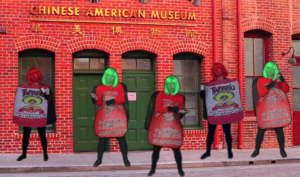

Left: “Hot Side Story” Yoshie Sakai (2014). Right: “KOKO’s Love: You’re Married….. Now What?” Yoshie Sakai (2015).
AZ: What are your current and near-future projects? Where can we find you next?
YS: I am currently preparing for and excited to be having my first solo exhibition in Los Angeles in January of 2017 (January 21st through February 11th) at the artist-run alternative space Groundspace Project (1427 E. 4th Street). The entire space will be transformed into a “KOKO’s Love” psychological playhouse for the everyday doubts, anxieties, and hopes that come from living, along with a Los Angeles premiere of the long awaited “KOKO’s Love: Episode 2.” The opening will be on Saturday, January 21st from 6 to 9 pm, and exhibition hours are Friday and Saturday, 1 to 6 pm.
Later in the year, I will have a screening of my videos at Filmfront, a cine-club in the Pilsen neighborhood of Chicago, which was made possible through the generous exhibition programming at ACRE, an artist-run non-profit in Chicago.
Throughout 2017, I will be working on my first artist book with the generous assistance of Antenna, a non-profit literary and visual arts events and education space in New Orleans, Louisiana. I will also be continuing my work with “KOKO’s Love” and its various manifestations and experimentations in video.
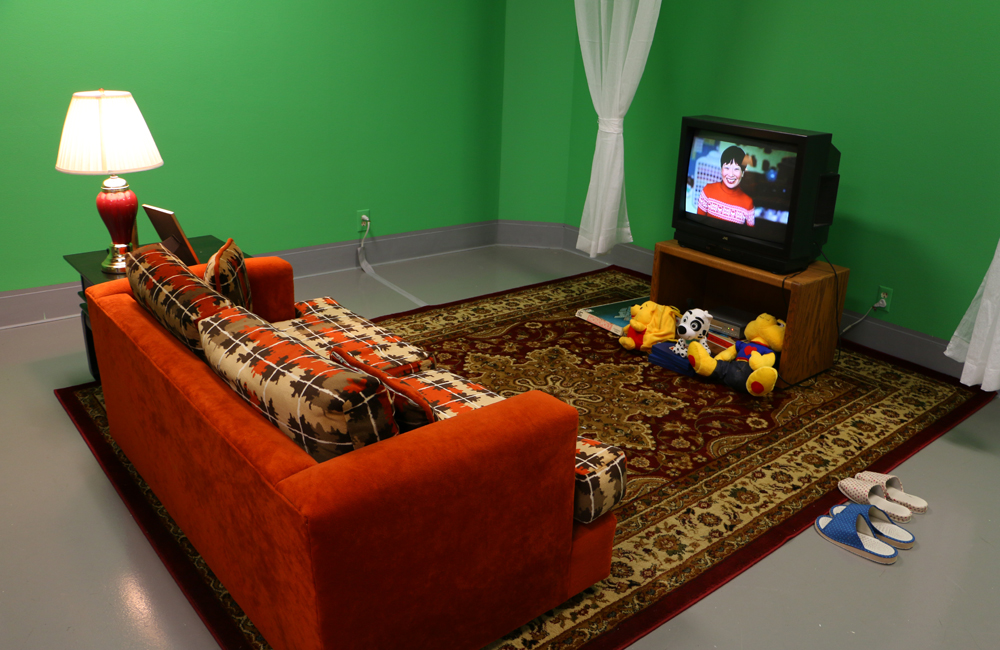
Top image // Still from “KOKO’s Love” Yoshie Sakai (2014).

